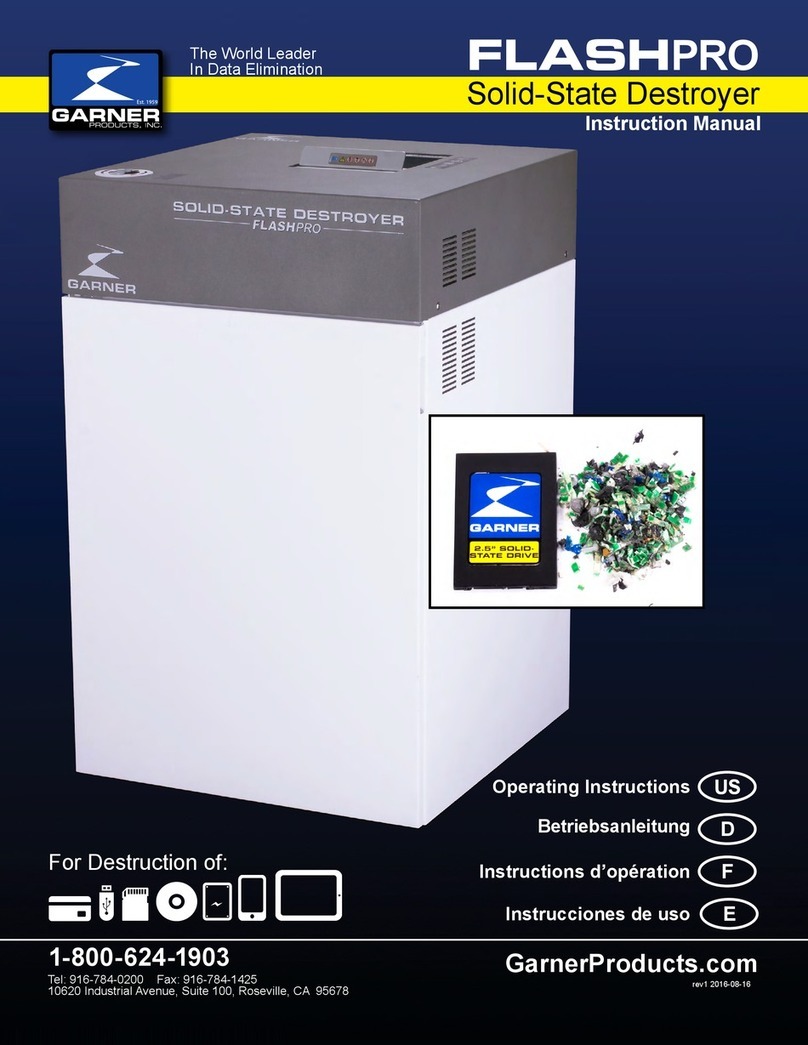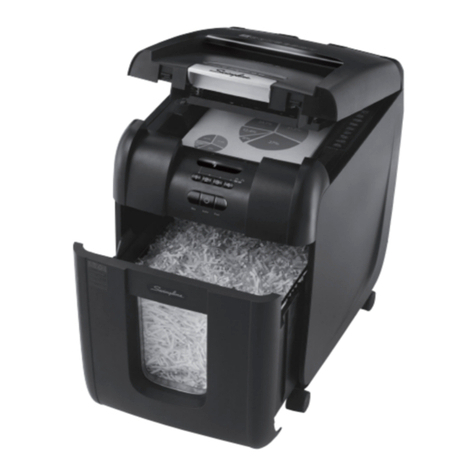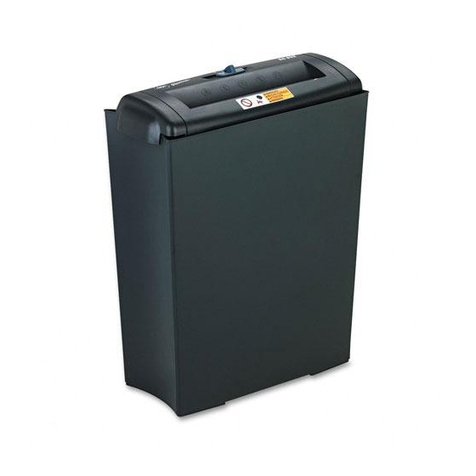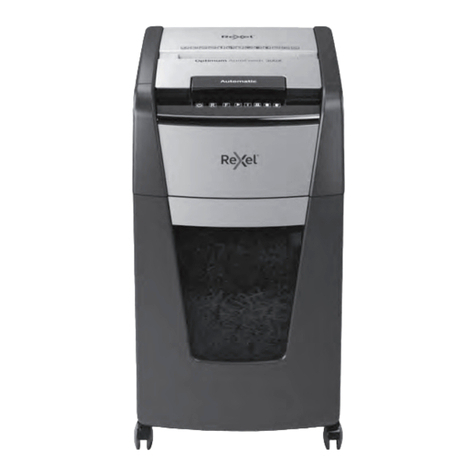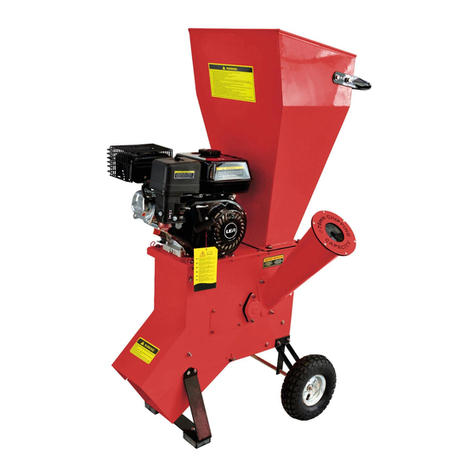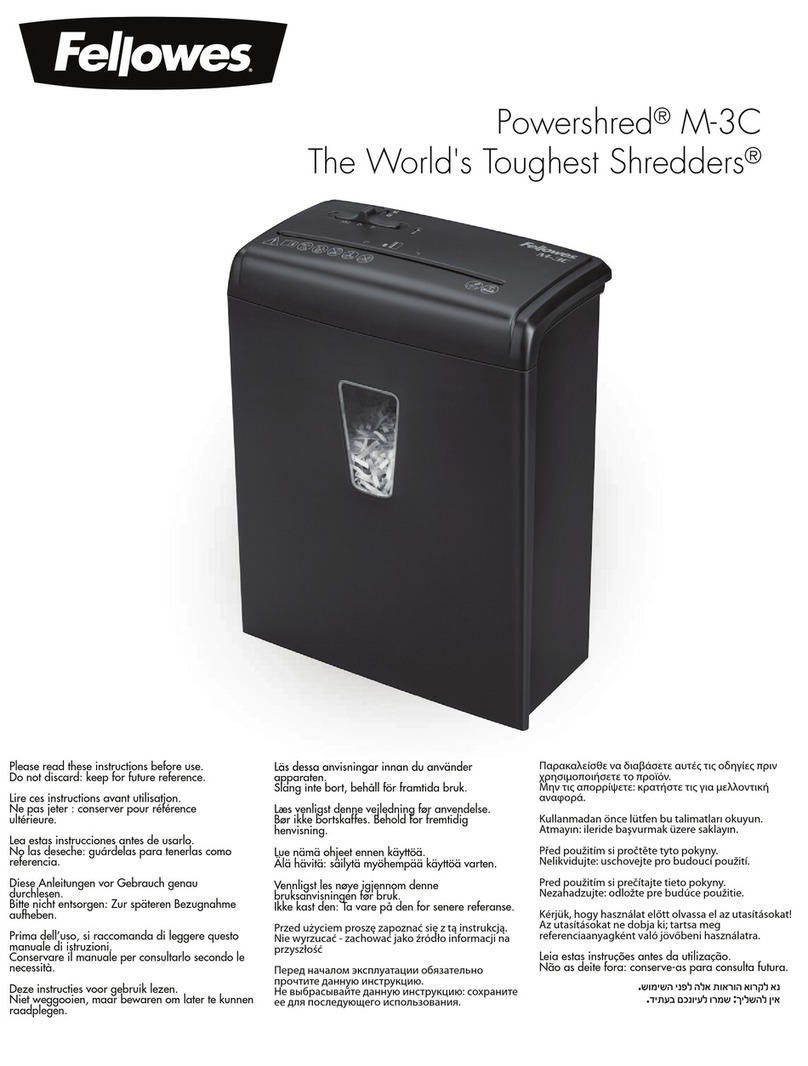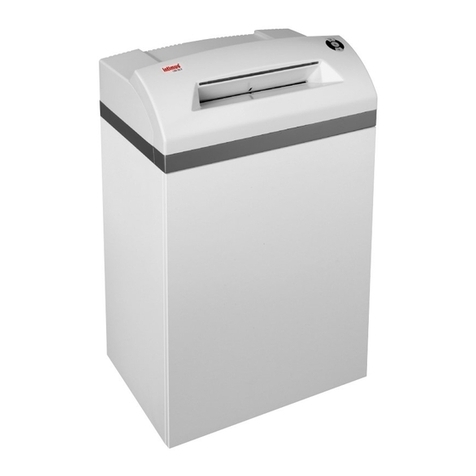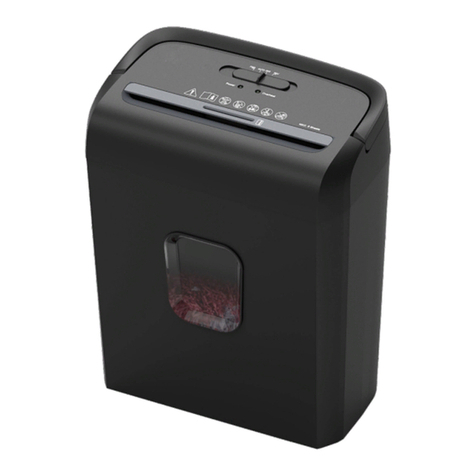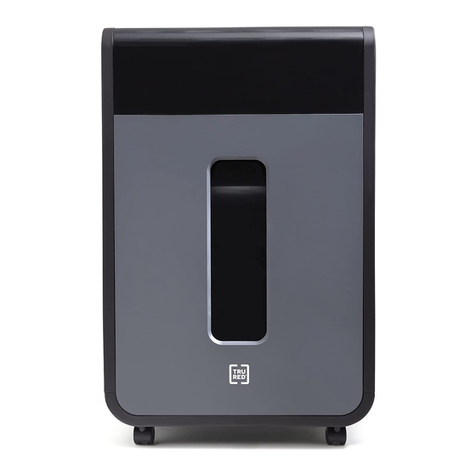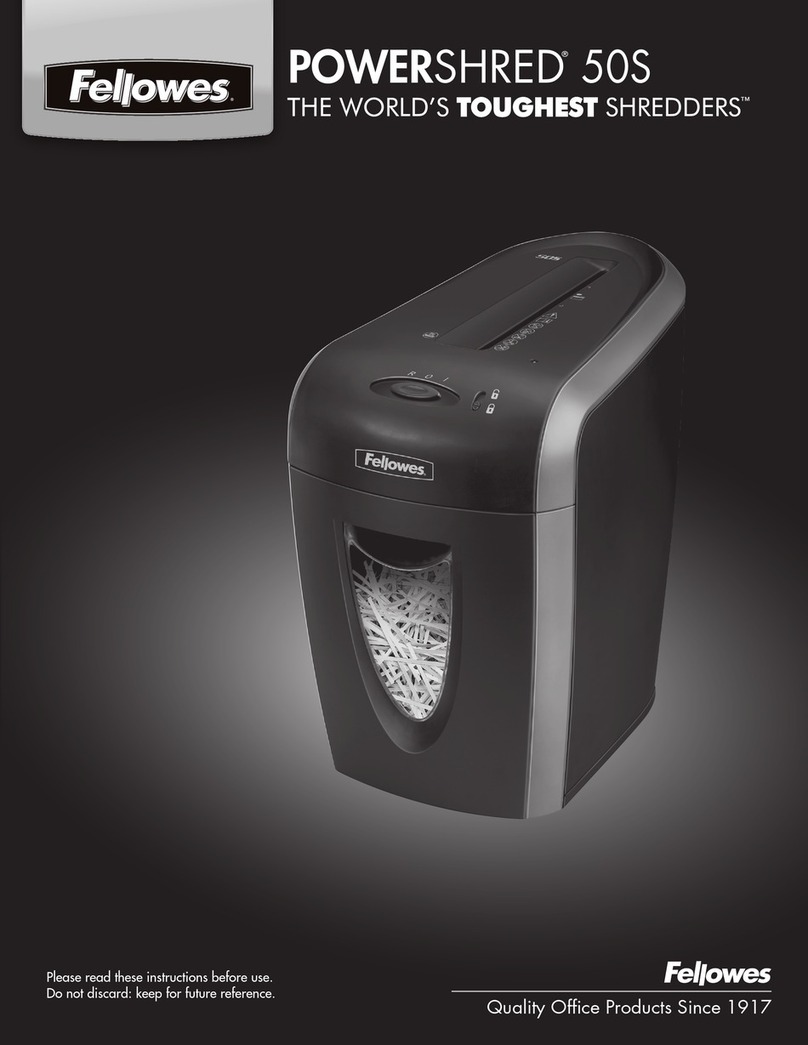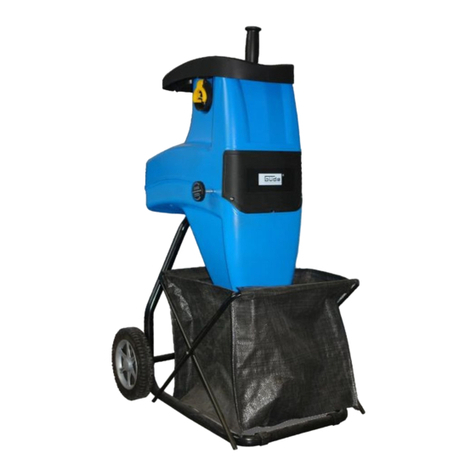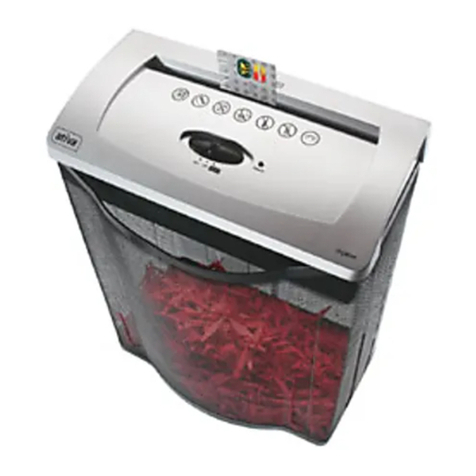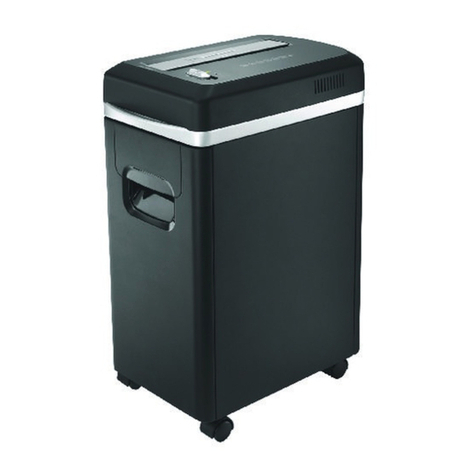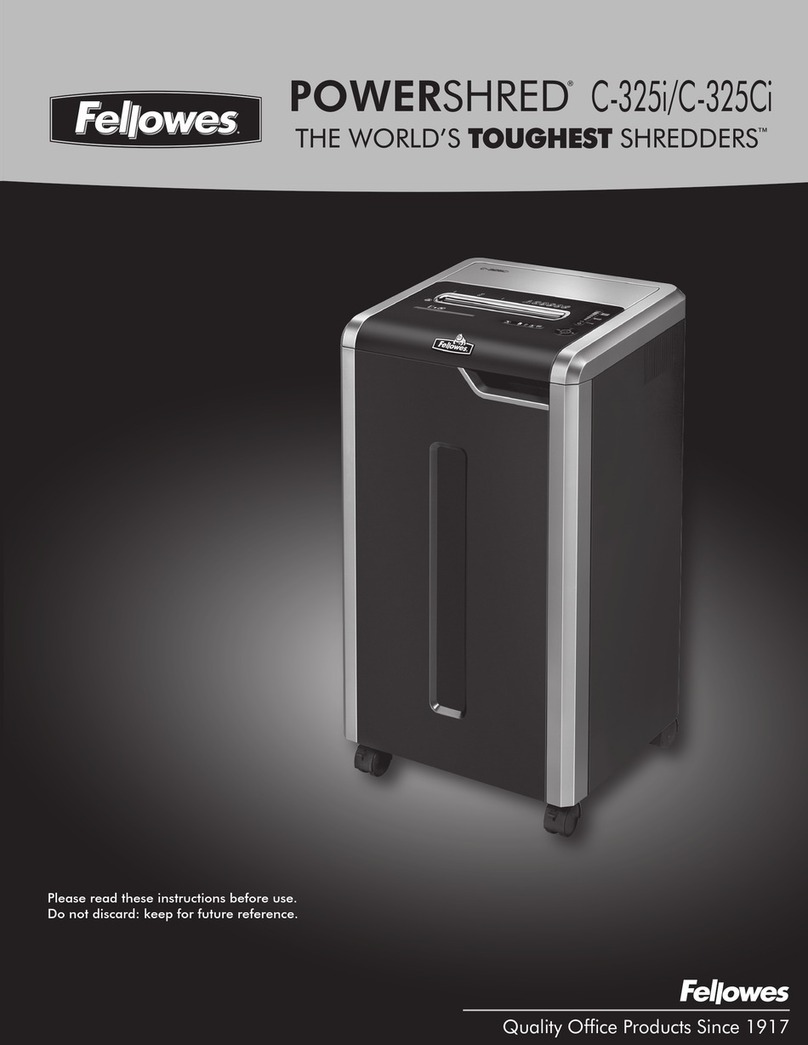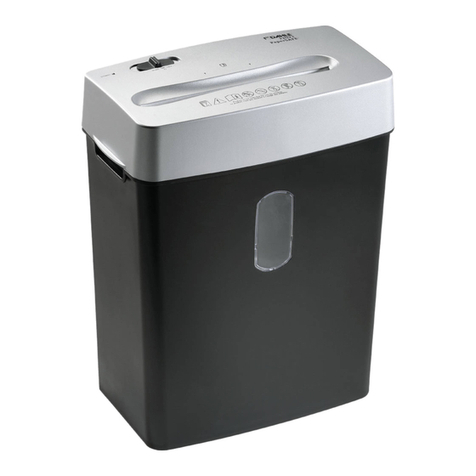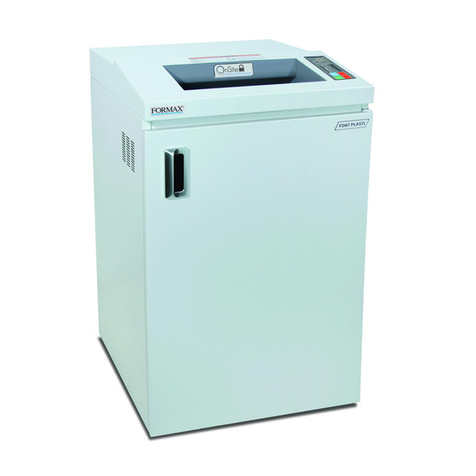6
•Use only in daylight or good artificial light.
•Do not put your hands into the feed funnel or ejection slot.
•If the shredder should start to vibrate abnormally, switch off the motor and check for the
cause immediately. Vibration is generally a warning of trouble.
•Ensure blades are secure before shredding. Do not operate the shredder if any of the
blades are not properly mounted.
•The shredder should be checked carefully before use. You should only work with a
shredder that is in good condition. If you notice any defect on the machine that may
cause danger to the operator, do not operate the shredder until defects are rectified.
•Replace worn or damaged parts for safety. Use only original spare parts. Parts not
produced by manufacturer may cause poor fit and possible injury.
•Use the shredder only in places where it is protected from water and never use it
outdoors in rainy weather.
•Store in a dry secure place out of reach of children,
•This appliance is not intended for use by persons (including children) with reduced
physical, sensory or mental capabilities, or lack of experience and knowledge, unless
they have been given supervision or instruction concerning use of the appliance by a
person responsible for their safety.
•Children should be supervised to ensure that they do not play with the appliance.
5.1 Preparation:
•Do not allow children to operate this equipment
•Do not operate this equipment in the vicinity of bystanders
•Wear ear protection and safety glasses at all times while operating
•Avoid wearing clothing that is loose fitting or that has hanging cords and ties
•Only operate the machine the machine in open space (e.g. Not close to a wall or other
fixed objects) and on a firm, level surface
•Do not operate the machine on a paved or gravel surface, where ejected material could
cause injury
•Before starting the machine, check that all screws, nuts, bolts, and other fasteners are
properly secured and that guards and screens are in place. Replace damaged and
unreadable labels
5.2 Operation:
•Before starting the machine, look into the feeding chamber to make certain, that it is
empty
•Keep your face and body away from the feed intake opening
•Do not allow hands or any other part of the body or clothing inside the feeding chamber,
discharge chute, or near any moving part
•Keep proper balance and footing at all times. Do not overreach. Never stand at a higher
level than the base of the machine, when feeding material into it
•Always stand clear of the discharge zone when operating this machine
•When feeding material into the machine be extremely careful that pieces of metal, rocks,
bottles, cans or other foreign objects are not included

